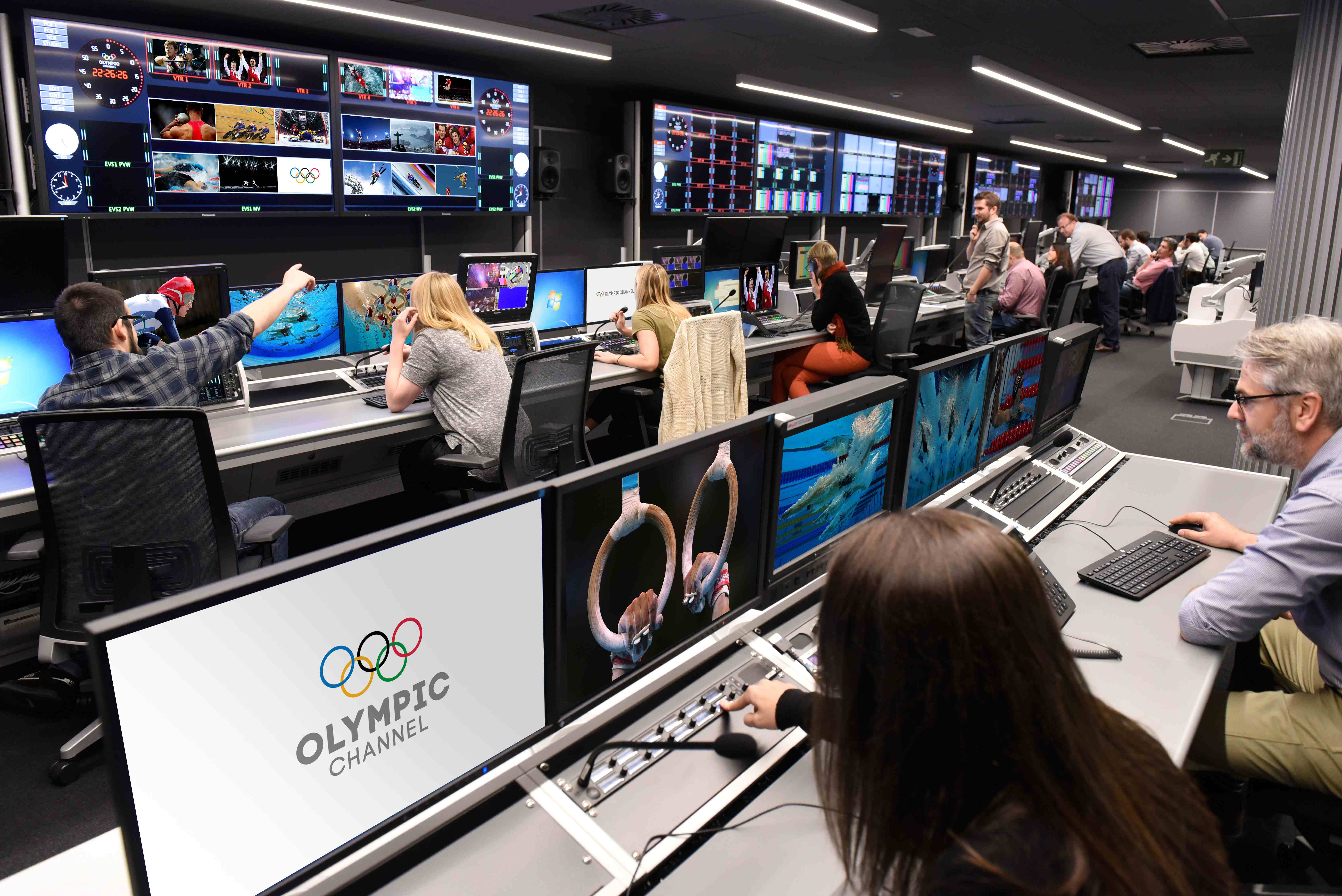Thought Leadership: Innovative thinking is needed to protect the sports broadcasting industry against COVID-19

Cerberus CEO Chris Clarke
By Chris Clarke, CEO, Cerberus
The sporting world has been turned upside down. From athletics to motorsports, events have been cancelled, delayed or postponed until 2021.
A couple of months ago, it seemed that this would be a temporary crisis, with news outlets referring to ‘disruptions’ in sports broadcasting. The coronavirus outbreak was perceived as challenging in the short term, but ultimately something the industry could take a few careful measures to contain.
However, FIFA President, Gianni Infantino, commented, “if games have to be postponed or played without spectators for a period of time until it’s over, well, then we have to do that”.
In hindsight this seems naïve, as the structure of the sports industry continues to be dismantled with the cancellation of the Tokyo Olympics Games. However, it is pertinent to remember that a short time ago, even the World Health Organisation assumed the games would go ahead.
With a spokesperson from the International Olympic Committee (IOC) confirming, “in addition, the IOC is in contact with the World Health Organisation, as well as its own medical experts. Preparations for Tokyo 2020 continue as planned and we look forward to returning for the next Project Review in February”.
While in many sectors bosses have shut their offices, separated their staff, and instructed teams to work from home, players find themselves adrift; after all, the Premier League cannot replace matches with a kick-around in the garden.
In these unprecedented times, decision makers within the sports industry must think creatively to secure the future for the organisations, athletes, clubs and critically remain connected and engaged with their fans.
Innovative solutions
Necessity is the mother of invention, and many sports leagues, content creators and broadcasters are finding interesting workarounds to keep athletes out of harm’s way. The Big3 – a three-on-three basketball league founded by hip hop musician and actor Ice Cube and entertainment executive Jeff Kwatinetz – is currently discussing plans for a basketball tournament featuring players with a negative coronavirus test result. The Big3 is reported to be in talks with several networks to broadcast the games in April, which would see players quarantined in a ‘big brother’ style house, complete with a full size court.
With live events suspended to maintain social distancing, we’re also seeing a growing number of eSports offerings coming to the fore. Audiences are turning to Redline’s Real Racers Never Quit series, to stay connected with their favourite F1 drivers – Max Verstappen dominated both races in the series’ second round.
Even before the outbreak, competing in live motorsport represented a significant risk to driver’s personal safety. eMotorsports offers a completely different viewing experience. Without the danger of vehicle collisions, competitors are able to engage in some light hearted banter throughout the race. It’s a more personal dynamic which offers audience’s the opportunity to get closer to their favourite sport personalities and engage with them in a new way.
To support the huge changes to daily life, broadcasters from all sectors are bringing in remote production and editing methods to ensure teams can maintain a safe distance from each other. As well as using cloud-based delivery technology to avoid many of the complications of traditional broadcasting. If teams don’t need to physically interact with one another, it opens up new options for broadcasters at a time when live content is scarce.

Behind the scenes in previous times at the Olympic Channel
Keeping sports social
In a connected age, restrictions enforced by the pandemic are creating new virtual communities. The essence of watching sport is social; the highs, lows, and post-match analysis are meant to be shared and discussed in depth with friends. However, this doesn’t just happen when an audience watches a live match.
The Olympic Channel website has collated some of the best of Olympian’s home workouts from across social media. Enabling viewers to learn leg strengthening exercises from Malaysian figure skater, Julian Yee Zhi-Jie, train with Somali boxer, Ramla Ali or keep flexible with Italian rhythmic gymnast, Marta Pagnini.
The new restrictions aren’t changing athlete’s commitment to fitness and there is definitely an interest in the training required to compete at a high level, as well as an immediate need for home workout ideas. This type of content provides great behind-the-scenes sessions for audiences and could offer an opportunity for low-risk, non-contact production.
Lots of sports personalities are taking to social media, to offer fans more personal content during the shortage of live sports. Liverpool midfielder, James Milner’s video, features playful ideas for things to do at home, including a run-down of his starting 11 created from household objects. Plenty of other international footballer’s are sharing ways to prevent boredom in isolation, with the #stayathome toilet roll skills challenge.
In future, the emergence of this light hearted content could be identified as a turning point within sports, ultimately leading to the creation of mainstream reality sports style TV. By utilising IP contribution, organisations can deliver live content over the internet at scale. This approach also offers the benefits of quick set-up time and delivery to multiple locations, whilst keeping overheads low, which is vital when the landscape of sports broadcasting is shifting every day.
Filling the schedule
To prevent churn, some broadcasters have given the option to press pause on sports packages. Offering payment breaks to subscribers, as a sign of goodwill until live sports return to schedules. That doesn’t mean they’ve stopped putting out content however, they recognise the need to keep fans engaged to prevent them from unsubscribing.
Broadcasters are suddenly feeling the pressure to fill vast schedules. Where previously they were supplied with seemingly endless live content options, now they must now think creatively to deliver compelling offerings. Fortunately, sport has a rich history to draw on and there are plenty of ways to repackage and monetise archive footage.
ESPN is looking into producing mini-marathons of successive games, focusing on either a specific sport or a particular team. At the moment the biggest challenge for broadcasters will be agreeing content rights. Burke Magnus, executive VP of programming, acquisitions and scheduling at ESPN, commented: “Re-airing full game presentations is not a right that we or other media companies typically have at our disposal at all times. Each one of these circumstances requires individual conversations with the specific league or property to determine what’s possible.”
With a lack of live events available to broadcasters and ongoing discussions continuing with rights holders, content providers need to tap into the fringe interests of an audience’s favourite sport. The commentary, transfer-window gossip, and background on players, provides plenty of points of interest under normal circumstances, but now it’s especially relevant. Many US networks are currently making a key feature of NFL free-agency coverage and it’s exactly the type of content that viewers are hungry for.
It seems that now is the time to push the boundaries of content, so that sports broadcasters can survive the crisis. BT Sport is currently developing innovative solutions to keep fans engaged, showcasing feature-length sports documentaries and exclusive footage from memorable sporting moments. This type of biography and behind-the-scenes content can help to fill sparse schedules and provide genuine audience engagement.
Securing the industry’s future
It is amazing to witness the creativity and drive within sports broadcasting, during immensely difficult circumstances. In order for the industry to meet the challenges ahead, it must continue to adapt. We don’t know how long these changes to programming schedules may last, earlier this year it was unthinkable that the 2020 Olympics would be cancelled.
The organisations currently planning new content, are working in ways they never have before. Overnight they have moved from operating in a very crowded marketplace, to responding to a desperate need for content. This is particularly true for those delivering smaller events, they may need to completely alter their contribution process and stream content directly to a live global audience.
Established broadcasters will also need to get content to their audiences from remote and perhaps even disperse locations. With sports personalities and commentators in isolation, some even filming in their own homes, cloud-based infrastructure will be an important part of the delivery solution.
What is also very clear is that some measures of quality have been lowered to allow home cameras, less than perfect lighting and unscripted dialogue similar to a lot of shows on Youtube and the audience love it because it is good content.
No one is quite sure of the long term measures that may need to be taken in these unprecedented circumstances. However, with innovative thinking, we can continue to protect jobs and support the future of the sports broadcast industry.
